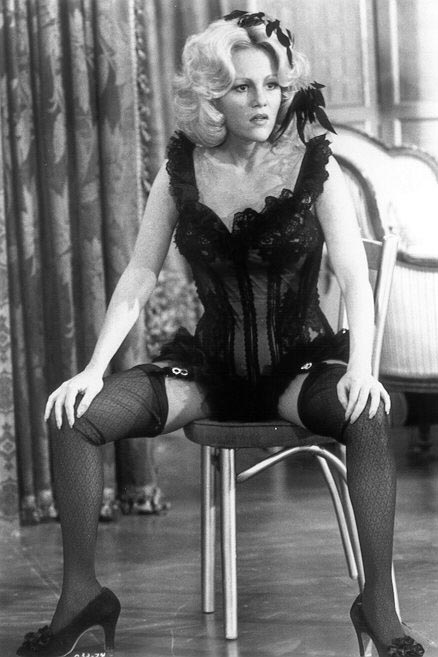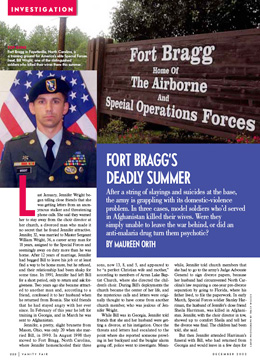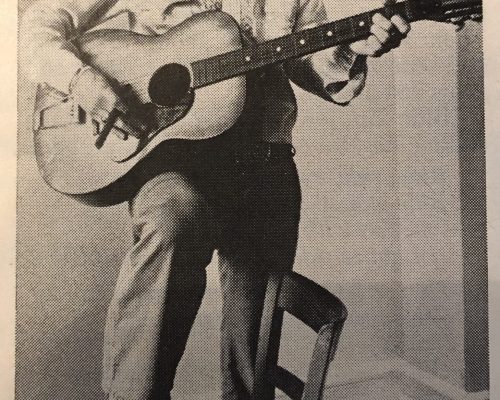Original Publication: Newsweek, March 4, 1974
Once they glittered from the silver screen, a legendary galaxy of female stars. Theda Bara and Garbo and Dietrich matched any male star in popularity: Katherine Hepburn and Claudette Colbert held their own against superstars like Tracy and Gable. Joan Crawford and Bette Davis made their leading men seem like human cigarette lighters. Those days are gone.
Men so completely dominate the screen today that women have all but become endangered species. Those few who survive are likely to play hookers, kooks or neurotic housewives. In the present masculine atmosphere of movies, women watch from the sidelines while men play cops (mostly crooked) and robbers, genocidal cowboys, alienated sports stars, oppressed convicts and super con men, violent teen-agers – a world of men only their mothers could love. In fact, that movie staple, the romantic couple, is becoming all-male. Couples like Paul Newman and Robert Redford in “The Sting” and Dustin Hoffman and Steve McQueen in “Papillon” would rather wink at each other than talk to a girl. In 1974 women are coming to realize their capacities in unprecedented numbers, but as far as Hollywood is concerned America is a monosexual culture.
Vision: When the studio system was in full force, the roles were more equally divided between the sexes. In 1934 six of film’s top ten box-office moneymakers were women: Janet Gaynor, Joan Crawford, Mae West, Marie Dressler, Norma Shearer and Shirley Temple. In 1964, with the studio system collapse and the male auteur-director on the rise, there were three. Today there is one – Barbra Streisand. Male speaking roles outnumber women’s 12 to 1, and women looking for heroines to identify with will have to be content with a vision of themselves as victims and losers.
The old roles played by stars like Davis and Crawford may have been stereotypes, but they were strong stereotypes, based on a consensus of social role and functions, and often the script went against the stereotype, satirically or dramatically. Today the consensus has broken down. “Nobody’s really comfortable right now,” say Ellen Burstyn, who last week received an Academy Award nomination for her role as the possessed child’s mother in “The Exorcist” “It’s like musical chairs with everybody asking, ‘What chair do I sit in?’ ”
The lack of roles for women is felt most keenly among actresses who are caught between wanted to work and detesting the roles they are asked to play. One of the rising young actresses is Marsha Mason, another Oscar nominee for best actress. She received the nomination for triumphing over a poorly written part as a trampy mother in “Cinderella Liberty.” “I’m sick and tired of seeing women be empty-headed,” she says. “They fail, lose or die. I’m not asking for hearts and flowers, but if you see a character go through a tremendous amount of pain you should let her grow.” Mason, a gifted and experienced stage actress, says that if she had to depend on film roles to fulfill herself professionally, “I’d take up sculpting.”
“In the scripts I get,” says actress Susan Anspach, “the woman is either a neurotic, a slut, a whore or somebody’s daughter. Or else there are the feminist films about women who hate men. There’s never just a real person with real drives – sexual drives and life drives.” For Hollywood even women’s sexuality is merely an extension of male libido. “Love scenes are always done from a man’s point of view,” says Jacqueline Bisset, an intelligent actress typed by her glamour. “In life when a woman is being sensual it motivates everything she does. In a film she just has to be ‘sexy’ – it’s not attached to anything.
Clout: the magic word in Hollywood today is “bankable.” A bankable star has clout – enough to guarantee the financing of a movie. And since money is tight, investors are looking for sure-fire formulas. There are fourteen or fifteen bankable males and one bankable female – Streisand. There is a roster of female semi-bankables that includes Ali MacGraw, Jane Fonda, Faye Dunaway, Goldie Hawn and Liza Minnelli. Operating under such a system, it’s hard for an actress to achieve stardom today.
One of the most versatile and fastest rising young actresses is Madeline Kahn, who has played a strait-laced bitch in “What’s Up, Doc?”, a hootchy-kootchy girl in “Paper Moon” and a take-off on the Dietrich-type saloon girl in “Blazing Saddles.” Kahn thinks that men and women both suffer from undeveloped consciousness. “People can’t get beneath the beautiful surface that assaults them,” she says. “Men feel threatened by beautiful men. We’re concerned with packaging, not content. When they want to focus on my breasts and I say no, they think I have a hangup. But they don’t give me any lines to explain my character or show what’s in my head. If a scene isn’t well written, they’ll drop your neckline to fill the void.”
The single greatest complaint actresses have is the male scriptwriter. Oscar-winner Cloris Leachman, the repressed wife in “The Last Picture Show,” goes so far as to reinvent her characters to “get them out of the ridiculous, cloying, needful, dependent roles that are put in by male writers.” Leachman is the mother of five. When working she still feels guilty enough to wake early to make her brood’s bag lunches. “I don’t want to play ‘Diary of a Mad Housewife’ ,” she says. “I’ve already had enough experience with that. On screen we’re still thought of as the wife or the other woman. We’re just like black people – we’re allowed in show business or the home.”
After her role in “The Exorcist,” Ellen Burstyn has earned both director and script approval in her next movie. Her first order of business with director Martin Scorsese was the change the script, in which she plays a single mother who earns her living as a singer. “We collaborated between his sense of the dramatic line and my representation of the woman’s point of view,” she says. “We’d write in the margin of the script: “No, a woman wouldn’t do this.” “Yes, she’d say that.” “That’s not the way it is.”
Not every actress feels so militant about women’s roles. Karen Black has played every kind of victim from the other woman to a junkie prostitute, and now she’s Faye, the bitter starlet in “The Day of the Locust.” “I contend girls’ parts are better than boys’,” says Black. “the ‘complexity’ of male roles is really made up of simple, basic drives. There are no emotions in conflict – no grief, loss, hysteria, bitterness or despondency. I think women’s roles offer a wider range of emotions. If I were a man I’d always have to be strong and in control.”
Apparently men in Hollywood share this attitude because they control everything. In the Producers Guild there are 3,000 men and eight women; in the Directors Guild 2,343 men and 23 women; in the Writers Guild, 2,828 men and 148 women. For men like producer Al Ruddy this state of affairs merely reflects society. “It’s only in recent times that a woman has functioned as anything beyond a wife, mistress, show girl or nurse,” says Ruddy. Ironically, Ruddy’s mother was a successful businesswoman, and his ex-wife, also a producer, helped to finance his picture “The Godfather.”
Intriguing: Speaking from his cavernous office, dressed in a denim jacket open to reveal dog tags against his hairy chest, Ruddy asserts “Writers look for intriguing people. They intuitively think of men because men function on a more important level than women. It may not be right, but it’s the reality. It’s a joke when I see housewives saying, ‘I want to run GM’.” Then he adds, “You try to get a big male star to accept a good script where the action belongs to the chick.”
Such attitudes make it clear to women that they need more footholds in the executive end of the movie business. Today there is a tiny but growing number of such women, Nessa Hyams, 32, has just been named vice president to West Coast production for Columbia Pictures. Julia Phillips, 29, a co-producer of “The Sting” is the first woman to produce a film nominated for best picture. Both are vivacious, driving and know their business. They hope to collaborate on a film version of Erica Jong’s novel “Fear of Flying” – a sex story from the woman’s point of view. “Women’s roles will probably improves as more women write literary works,” say Hyams. “And as women move in and get authority, they’ll be able to gang up the heads of studios and say, “We’re gonna do this project!’ ”
Salable: “This town is about power and clout,” say Phillips. “There have to be more people like me and Nessa with the power to say yes or no to a $2 million deal about women.” But making the deal is not enough. As Susan Anspach says, “The woman’s picture had better work or everyone will say it doesn’t sell because it ‘s about women. We need the script that can make women a salable commodity.”
Hollywood women are quick to point out they are not interested in feminist propaganda – particularly boring “movement stories” without humor. “There’s a fear among men in this business,” say actress Kathleen Nolan, the first vice president of the Screen Actors Guild and a leader for women’s rights in the industry, “that if we upset their structure by making films with strong women, those films might ultimately change the women married to the men in Beverly Hills and Scarsdale with their big cigars.”
But for Karen Black the decline in women’s roles reflects a more general decline in values. “If you watch old movies on TV,” she says, “you see that if the hero lies the girl won’t accept him. Now everybody’s a thief. Women used to be the keepers of the morals. As morals, decline, women’s roles diminish.”
This article is typed from the original material. Please excuse any errors that have escaped final proofreading.




